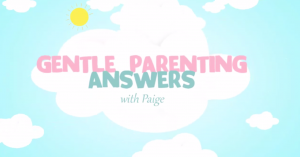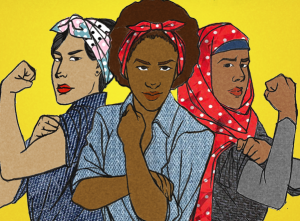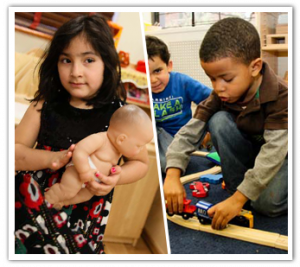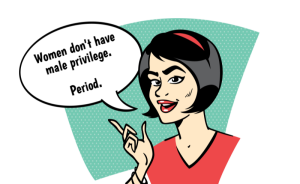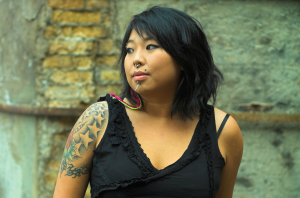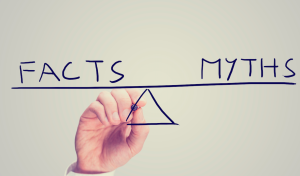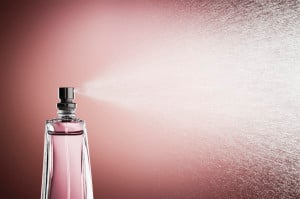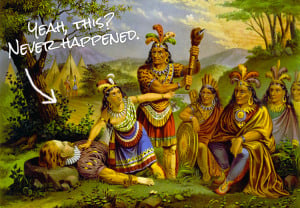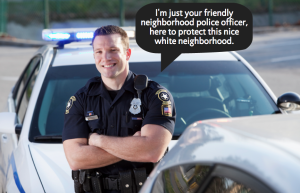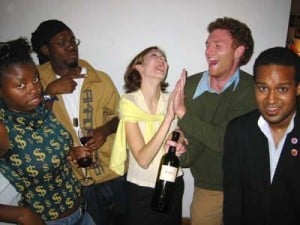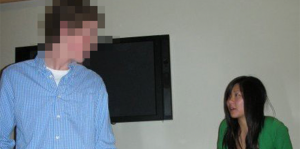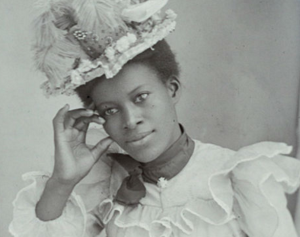
Source: NY Times
Originally published on Autostraddle and cross-posted here with their permission.
Asian America: Land of the immigrants, the ninjas, the kung-fu masters, Laundromat owners, Eastern mystics, Chinese restaurant waiters and people who can’t pronounce their Ls and Rs properly. It’s a land of slanted eyes and incorrect grammar. It’s a land of the yellow menace taking America’s money.
It’s a land of stereotypes — at least, according to television and film.
Asian stereotypes are everywhere, and oftentimes they go unnoticed and unquestioned. More often than not, if you see an Asian/American depicted on the screen, you’ll also see an Asian stereotype. From the character Han Lee in “2 Broke Girls” to Long Duk Dong in “Sixteen Candles” and the “yellow girl” in Pete Hoekstra’s recent racist political ad, these stereotypes are unrealistic and offensive.
Unfortunately, these stereotypes too often fall under the popular radar and aren’t discussed or acknowledged as much as they should be.
I want to get the discussion started. I’d like to examine three of the most pervasive Asian stereotypes — the Media Action Network for Asian Americans’ website, MANAA.org, has an amazing breakdown of the negative Asian stereotypes we see so often in mainstream media. I’ve taken three of the points from MANAA’s list and I’ll be building upon them in this article.
This is an invitation to find, look at, and think about the uncomfortable portrayals of Asian/Americans you see in the media — and start your own discussions.
1. Asian Americans as Foreigners Who Cannot Be Assimilated
“Because [Asian/Americans] are racially and culturally distinctive from the American mainstream, Asian people have been widely seen as unable to be absorbed into American society. According to this view, anything Asian is thus inherently ‘alien’ to America.”
If I had an ARGH for every time I’ve seen or experienced this stereotype, I would be ARGH-ing all day.
The few portrayals of Asian/Americans in mainstream TV and film are often characterized by “unassimilated” or “exotic” stereotypes, like Asian accents, martial arts ability, unusual appearance (like traditional clothing), foreign birthplace and language of origin, and a propensity for eating exotic or culturally unacceptable things like dogs or cats.
The problem in my lived experience is that these few portrayals end up being what people expect of me, and other Asian/Americans, too, and they create a kind of cultural identity erasure. When people look at me, they expect something that I am not — they expect an exotic other that doesn’t “belong here” (that is, in the United States).
These stereotypes are so pervasive that they leave no space in the cultural landscape for an Asian/American who speaks English with a North American accent (like I do), an Asian/American who does not speak an Asian language with fluency (like I don’t). and an Asian/American who was born in the United States (like I was).
Instead, I’m approached by people who assume that I’m either an immigrant restaurant worker (we’ll get to stereotypical Asian occupations in a bit) or an international student at the local university — two things that place an immigrant or foreign identity on me, even though I’m an American citizen and have been living in the US my entire life.
My elementary school classmates all thought I could do kung-fu. I’ve been told that I speak English “remarkably well” (that is, without an Asian accent). And acquaintances are often shocked when they hear I’ve never been to China (which I haven’t; the only time I’ve been out of the US was a brief stay in Toronto).
The stereotype of Asian/Americans as foreign or “other” creates a divide between who I am and how I am perceived — it’s like my US citizenship status is dictated by my appearance and my ethnic background.
People who look Asian, the assumption goes, are somehow unable to be American — we can see this demonstrated in the racist Chinese restaurant scene in “A Christmas Story,” when the all-American family has its Christmas dinner in a Chinese restaurant. The otherness of the Chinese people in the restaurant is demonstrated by horrible ethnic caricatures: Traditional dress, lack of understanding of American customs and most glaringly, what I’d like to call “fa ra ra ra bullshit” — the racist stereotype that Asian/Americans swap the Ls and Rs in their speech interchangeably. I’ve never, ever heard any Chinese or Asian non-native English speaker sound the way the singers sound in “A Christmas Story.” Ever. Period. And the supposed humor in the scene comes from the irony of it all — the all-American family having an all-American Christmas meal at a Chinese restaurant, which, as it’s played in the film, is the most un-American experience anyone could ever have.
These stereotypes are embedded in our culture and pass by unnoticed, especially since “A Christmas Story” is a culturally beloved film that almost everyone has seen. I watched “A Christmas Story” for the first time last Christmas, and I liked it (with the exception of the restaurant scene) but I had never heard anyone ever call out the film for, or even talk about, its racist scene.
I was shocked when I first saw the film. The lack of discussion about this scene sends the message that this racism against Asian/Americans is still acceptable (or even funny) — that making fun of Asian/Americans through unrealistic Asian accents and an inability to speak English “correctly” (and highlighting this by titling the YouTube clips of the scene things like “Fa Ra Ra”) is A-OK.
The cultural identity of Asian/Americans is deeply affected by racist scenes like this, especially when these racist tropes are not talked about or discussed — without acknowledging how other-izing and racist these scenes are, this “unassimilated” and “unassimilate-able” identity of Asian/Americans becomes the norm, and it becomes what’s expected from people who look like me.
From people greeting me with phrases like “konichiwa” to people saying things like “herro” to me (which is supposed to be “hello” with a racist affect), my identity as an Asian American becomes invisible, covered in so many racist and other-ing tropes that people see a stereotype of non-English-speaking immigrant when they look at me rather than an Asian American individual who’s a citizen of the United States.
2. Asian Cultures as Inherently Predatory
“For decades, Americans have viewed Asian immigrants as ‘taking’ from this country without giving anything back. This perception was reinforced by early laws making it difficult for Asians to immigrate and impossible for them to become naturalized citizens. Although these laws have since been repealed, the image of the Asian as alien predator still infuses popular media.”
In 1982, Vincent Chin was beaten to death in Detroit, Michigan. Chin had been in a bar celebrating his soon-to-be wedding. Two white men, Ronald Ebens and Michael Nitz, approached Chin and said to him, “Because of you motherfuckers, we’re out of work.” According to Helen Zia, a journalist and race activist (and witness in the Prop 8 trial!) who covered the murder in Detroit:
“Vincent replied, ‘Don’t call me a fucker,’ and a scuffle ensued. … Both groups were ejected from the bar. Ebins and Nitz hunted for Chin and the other Chinese man in his group … They drove through the area for a half hour with a neighborhood man whom they paid to help them ‘get the Chinese.’ Finally they spotted Vincent and his friend in front of a crowded McDonald’s on Woodward Avenue, Detroit’s main central thoroughfare. Creeping up behind the Chinese Americans, Nitz held Vincent Chin down while his stepfather [Ebins] swung his Louisville Slugger baseball bat into Vincent’s skull four times, ‘as if he were going for a home run.’ Two off-duty cops who were moonlighting as security guards witnessed the attack. … Mortally wounded, Vincent died four days later. His four hundred wedding guests attended his funeral instead.” (From “Asian American Dreams”)
According to Roland Hwang, an attorney with the Michigan Department of Attorney General, Ebins and Nitz got away with committing a racially motivated murder in front of two cops virtually scot-free. For second-degree murder, each man was sentenced to “three years probation and a fine of $3,000.”
How does this happen? When any group of people is racially coded as “outside” of American culture, we start to think of them as inhuman, and they become an easy target for frustrations and resentments.
In the early 1980s, the automotive industry in Detroit was failing, and fuel- and cost- efficient Japanese cars were on the rise. The blame for the failing economy was placed on Japan, and as a result, Detroit suffered from a great deal of racism and racial anxiety against Asian Americans, regardless of ethnicity.
Chin wasn’t Japanese — he was a Chinese American man who worked in Detroit, just like Ebins and Nitz. But because of his “outsider” status coded by his race, he became a target, and a symbol of a hated “other” or “outsider” that was supposedly taking American money. Chin became an American scapegoat for a symbolic, race-based hatred.
This doesn’t stop in the 1980s. While Vincent Chin’s murder did spur a great deal of Asian American civil rights activism, this kind of “Asian people as enemies of America” stereotyping still happens today — take Pete Hoekstra’s racist Superbowl ad, which was released this year.
The ad presents China as a force that’s antagonistic to America — Hoekstra insinuates that China is taking money and jobs from Americans, and that his rival, Debbie Stabenow (a Democrat) is funneling money to China. These nationalistic anxieties about countries like China become racial anxieties, too. “China,” an outside, antagonistic force, becomes racially coded as “Asian,” and this gets mapped onto Asian America.
In the same way that nationalistic anxieties about Japan created a dangerous racial climate for Asian Americans in Detroit in the 1980s (and internment during WWII), these nationalistic anxieties about China — “an increasingly common target for political candidates” according to CBS — are similarly creating an unwelcoming racial climate for Asian Americans today.
Hoekstra’s ad presents Asians as inherently “other” and “alien” to American culture and hurtful to the American economy. When these stereotypes become widespread, this animosity can get mapped onto individual Asian Americans who aren’t nationalistically associated with China — like me.
3. Asian Americans Restricted to Clichéd Occupations
“Asians and Asian Americans make their living in a wide array of professions, but too often, Asian American professionals are depicted in a limited and predictable range of jobs: restaurant workers, Korean grocers, Japanese businessmen, Indian cab drivers, TV anchorwomen, martial artists, gangsters, faith healers, laundry workers, and prostitutes.”
My grandfather owned a Laundromat in Manhattan, and he worked day shifts as a waiter in a Chinese restaurant. My grandmother was a seamstress. These occupations were part of — but not the entirety of — my grandparents’ contributions to America.
My grandfather also fought for the US in World War II in the Flying Tigers as an airplane mechanic and gunman. Victoria Moy writes about this experience beautifully in her Huffington Post article, titled “You Must Remember This”:
“When I asked my grandpa, ‘what was the happiest moment of your life?’ I thought he’d surprise me with a romantic story about how he met my grandmother, but he didn’t. ‘My happiest days?’ he said, ‘it was with the boys, in the army.’
‘When did you first feel like a real American?’ I asked.
‘In the Army. I was an airplane mechanic for the Flying Tigers. There were over 1,000 of us, Chinese Americans, with the 14th Air Force. We traveled through the Himalayas, India, and Africa to China.’
Grandpa sang me army songs, and taught me to march like a soldier; his pride in being American was intense. It made me wonder if nationality would ever imprint itself onto my identity so strongly. At 13, I asked him to tell me his story one more time. He died that year.“
Moy’s descriptions of her grandfather fit my grandfather to a T: Our grandfathers both speak Toisanese (a village dialect of Cantonese) and English, watch American films religiously, worked in Laundromats, were paper sons, fought for America in WWII, and, most of all, are American.
It’s a picture of the Asian America of a half a century ago that I’ve never seen acknowledged in mainstream media — Asian Americans as patriotic, hard working, and resourceful. These men, who are part of my family and 1,000 other Asian American families, fought in a war and risked their lives for this country — a story that gets overlooked too often.
When the few Asian Americans in the media are relegated to shop owners (Han Lee in “2 Broke Girls” and Mrs. Kim in “Gilmore Girls”) and other service positions, we miss out on the larger picture: The value of the work Asian Americans do, the sacrifices we’ve made for this country and our patriotic ties to our communities.
Overlooking the contributions of Asian Americans has a long history, though — take, for instance, the thousands of Asian Americans who worked on the Transcontinental railroad and were excluded from the celebratory ceremonies, and most notably, the railroad’s completion photo, in favor of their white counterparts. Or the official US Air Force films from WWII, which depict the Flying Tigers as white servicemen rescuing the hapless Chinese — without a mention of the Chinese Americans who fought on America’s side, too.
These stereotypical jobs focus on just the economic ties that Asian Americans have with America, ignoring the other contributions we have made.
They present Asian Americans as “predators” who benefit from America and are just waiting to go back to “where they came from” with American money, without offering anything in return. In the popular imagination, the “American” part of Asian America is flimsily attached to our identities and is fundamentally insecure. The limited set of occupations available to Asian Americans on TV and in the movies reinforces the belief that Asian Americans don’t belong here, and aren’t really helping America, either.
The representation of Asian Americans is slowly expanding — we now have doctors, played by Sandra Oh in “Grey’s Anatomy” and Charlyne Yi in “House”; there are dancers and singers played by Jenna Ushkowitz and Harry Shum Jr. in “Glee”; the ensemble cast of “Community” includes Asian American students Danny Pudi and Ken Jeong. Still, you only need two hands to count the number of Asian Americans currently on network TV.
The lack of varied and two-dimensional Asian American (main) characters in mainstream media is staggering, especially to those who are looking for to see themselves in the media, like I am. The times I have felt kinship or identification with a character or person on TV and film are few and far between — and these representations can be more easily found in independent media rather than the mainstream.
The first time I felt I like a film was really talking about me and to me was in late college; the film was Renee Tajima-Pena’s “My America … or Honk if You Love Buddha,” a documentary that looked at Asian America, stereotypes of Asian Americans, and even interviewed Asian American families that have been in America for over eight generations. It’s an amazing film, but I haven’t connected to any film or show the same way since, except for Pearl Girls Productions’ queer Asian American webseries, “That’s What She Said.”
The representations of Asian/Americans in mainstream TV and film don’t seem to speak about Asian Americans from a place of knowing or understanding, or even trying to know or understand; instead, I’ve seen a lot of racial tropes being repeated over and over again.
Why? Maybe it’s unquestioned convention? Maybe we need more people of color in charge of media representation? I’m not sure. But the cycle continues: Asian/American stereotypes are used; these stereotypes are not corrected or talked about or thought about; rinse and repeat.
***
How do we fix these things? We become more aware.
We think about the representations of race and gender we see. We talk about them. We maybe even yell about them. We acknowledge how these representations make us feel uncomfortable about ourselves, or, in the best cases, proud to be who we are.
As a person of color, I feel out of control when I think of the way the media has historically portrayed people like me — the eternal immigrant, the restaurant worker, the money-sucking Chinese threat; the accented, L-and-R-swapped comic relief. It’s painful to see how few times I felt I could identify with people like me.
It’s been difficult just trying to wrest enough authority over my own identity to be able to stand up and say something as simple as “I’m Asian American” without feeling ashamed. No one should have to go through this, but we do.
As queer people and as women, activists and people of color, we are people fighting for who we are in all of our nuanced selfhood. We are fighting for the right to our own identities and who we are. And by examining these representations of ourselves and how people see us, and how we see ourselves, there is power in creating agency over our own identities.
It’s an ongoing process: Think, talk, yell, fight. Rinse. Repeat.
[do_widget id=”text-101″]
Whitney Pow is a PhD student at Northwestern University studying gender, sexuality and race in video games and new media. She is also a freelance writer and graphic designer and has worked for organizations including Literary Death Match, Autostraddle, The Feminist Press, Publishers Weekly and the Asian American Writers Workshop. Check out her blog at whitneypow.com and follow her on Twitter @whitneypow.
Search our 3000+ articles!
Read our articles about:
Our online racial justice training
Used by hundreds of universities, non-profits, and businesses.
Click to learn more






